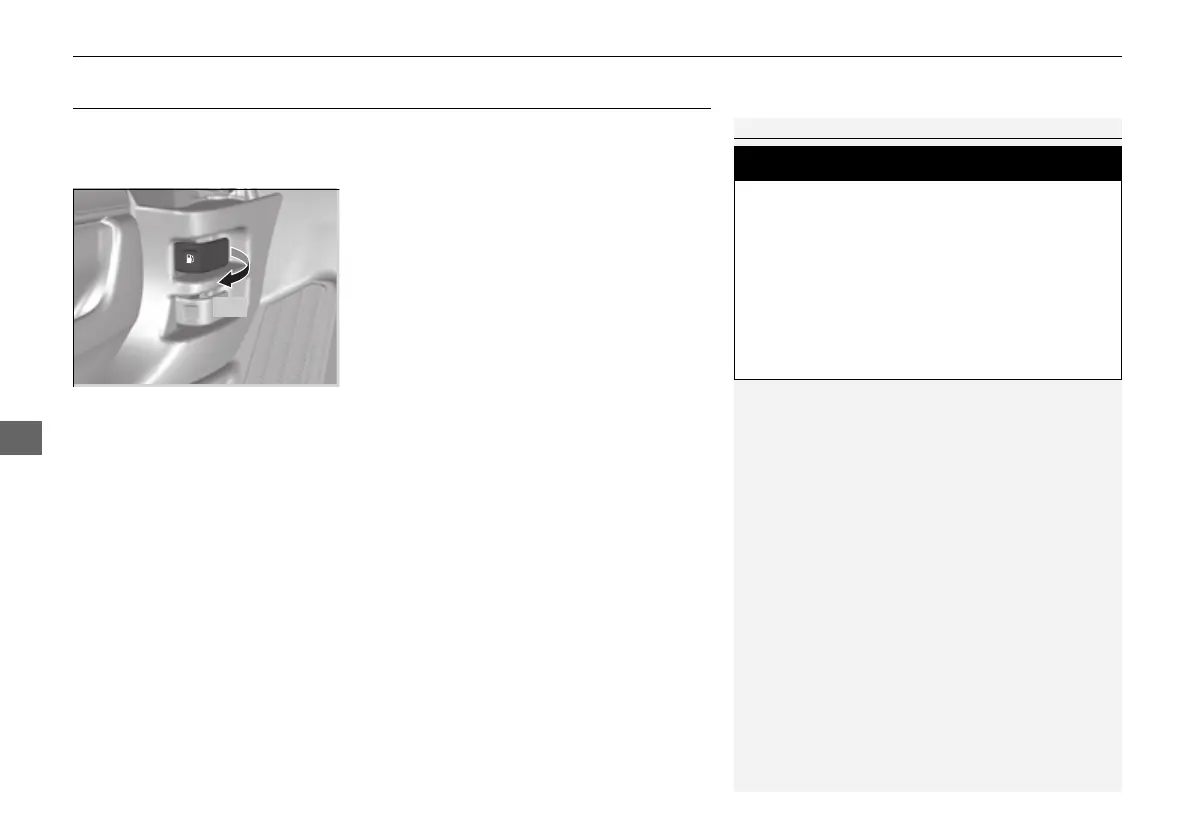
 Loading...
Loading...
Do you have a question about the Honda CR-V 2017 and is the answer not in the manual?
| Brand | Honda |
|---|---|
| Model | CR-V 2017 |
| Category | Automobile |
| Language | English |
Essential safety rules for driving, including wearing seat belts and not drinking and driving.
Advice on handling your vehicle, especially concerning rollover risks and off-highway driving.
Explanation of the vehicle's safety cage, crush zones, steering column, and seat belt tensioners.
A checklist of essential items to verify before driving to ensure safety.
Learn how to properly use and inspect your vehicle's seat belts for maximum safety.
Understand the types, components, and operation of your vehicle's airbag system.
Guidelines for properly restraining infants and children in the vehicle to ensure their safety.
Information about the dangers of carbon monoxide gas and how to avoid exposure.
Explains various system indicators, their meaning, and what to do when they are on or blinking.
Details on the speedometer, tachometer, fuel gauge, and related indicators.
Explains the odometer, trip meter, engine oil life, and other gauges shown on the display.
Information on the interface showing odometer, trip meter, outside temp, and other gauges.
Instructions on how to adjust the time and customize the clock display format.
Instructions for locking and unlocking doors, including key types, remote functions, and childproof locks.
Procedures for opening, closing, and operating the power tailgate with various access methods.
Details on the immobilizer system and the security system alarm activation.
How to operate power windows manually and with the remote.
Instructions on opening, closing, and tilting the moonroof using the switch or remote.
How to open, close, and operate the sunshade of the panoramic roof.
Explanation of ignition switch, ENGINE START/STOP button, and their power modes.
How to use the turn signals, including the one-touch turn signal feature.
Instructions for operating headlights (high/low beam), fog lights, and automatic lighting control.
How to use the fog lights and their indicator.
Explanation of how the system automatically changes between high and low beam headlights.
Conditions under which parking/daytime running lights turn on and off.
How to operate windshield wipers and washers, including intermittent settings and rear wiper.
How to adjust the instrument panel brightness using the control knob.
How to use the rear defogger and heated door mirror button.
How to store and recall driver's seat positions using the memory system.
Instructions on how to adjust the steering wheel height and distance for comfortable driving.
How to adjust the interior rearview mirror and power door mirrors.
Detailed instructions for adjusting front seats, including manual and power seat functions.
Information on interior lights, map lights, cargo area lights, glove box, and center console.
How to use the automatic climate control system, including defrost and air distribution modes.
Overview of the audio system, including AM/FM radio, iPod, USB, Bluetooth®, and remote controls.
How to connect and use HondaLink, Apple CarPlay, Android Auto, and manage apps.
How to customize the driver information interface by editing, adding, or deleting icons.
Essential checks of exterior and interior components before starting your vehicle to ensure safe operation.
Guidelines and precautions for towing a trailer, including load limits and equipment.
Precautions and tips for driving on unpaved roads, including handling and safety.
Procedures for starting the engine, including parking brake, shift lever, and ignition switch usage.
Safety precautions for driving utility vehicles, handling rain, and avoiding potential hazards.
Explanation of CVT operation, creeping, and kickdown functions.
How to change shift positions (P, R, N, D, S, L) according to driving needs and lever operation.
How to use the ECON button to improve fuel economy by adjusting performance settings.
How to use cruise control to maintain a constant speed and adjust vehicle speed.
Information on the camera's function, location, handling, and potential issues.
How ACC with LSF works, conditions for use, activation, speed adjustment, and cancellation.
Explanation of how RDM alerts and assists with lane departure, including system operation and conditions.
How LKAS provides steering input and alerts for lane drifts, including system operation and suspension conditions.
How VSA helps stabilize the vehicle during cornering and maintain traction on slippery surfaces.
How agile handling assist lightly brakes wheels during cornering to support stability and performance.
How BSI detects vehicles in alert zones and provides assistance when changing lanes.
How LaneWatch displays passenger side rear areas when turn signal is activated and allows checking for vehicles.
How the system transfers power to rear wheels for increased mobility and traction.
Guidelines for checking tire pressure, treadwear, and selecting appropriate tires and wheels.
Details on the parking brake, foot brake, ABS, brake assist, and collision mitigation braking systems.
Instructions for parking, using the Cross Traffic Monitor, and Multi-View Rear Camera.
Information on fuel recommendations, refueling procedures, and improving fuel economy.
Essential inspections and maintenance tasks to keep the vehicle in good condition.
Locating and checking key fluid levels, engine oil, and other items under the hood.
Procedures for checking and refilling engine coolant, transmission fluid, brake fluid, and washer fluid.
Instructions for replacing headlight, fog light, taillight, and other exterior/interior light bulbs.
How to check, change, and maintain front and rear wiper blades for clear visibility.
Guidelines for checking tire pressure, treadwear, and selecting appropriate tires and wheels.
How to check the battery, charge it, and replace the remote transmitter battery.
Instructions for replacing the button battery in the master key and smart entry remote.
Information on servicing the air conditioning system and replacing the dust and pollen filter.
Guidance on interior and exterior cleaning, including floor mats and leather care.
Warnings and recommendations regarding the installation of accessories and vehicle modifications.
Steps for changing a flat tire, including preparation, jacking, and TPMS calibration.
Steps for troubleshooting when the engine won't start, including battery, fuses, and smart entry remote issues.
Procedure for releasing the shift lever if it cannot be moved from the P position.
Steps to handle engine overheating, including first aid and next steps.
Explains various warning indicators like low oil pressure, charging system, malfunction, brake, EPS, and TPMS.
Information on fuse locations and how to inspect and change fuses.
Guidance on emergency towing procedures and how to open the tailgate when it fails.
Instructions on refueling from a portable fuel container and related warnings.
Details on vehicle specifications, including dimensions, weights, engine, fuel, washer fluid, and light bulbs.
Location of Vehicle Identification Number (VIN), Engine Number, and Transmission Number.
Information on vehicle systems emitting radio waves and FCC/Industry Canada compliance.
Procedures for reporting safety defects to NHTSA (US) and Transport Canada (Canada).
Explanation of readiness codes for emissions testing and how to prepare the vehicle for retesting.
Overview of new vehicle, emissions, seat belt, rust perforation, accessory, and replacement parts limited warranties.
Information on obtaining service publications and owner's manuals from Helm Incorporated or dealers.
Contact details for Honda Client Relations/Services and necessary information to provide when calling.